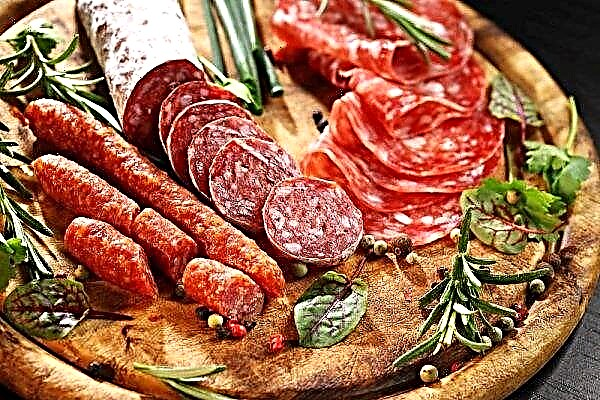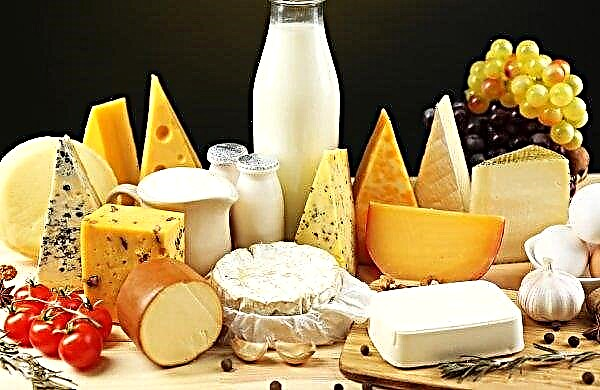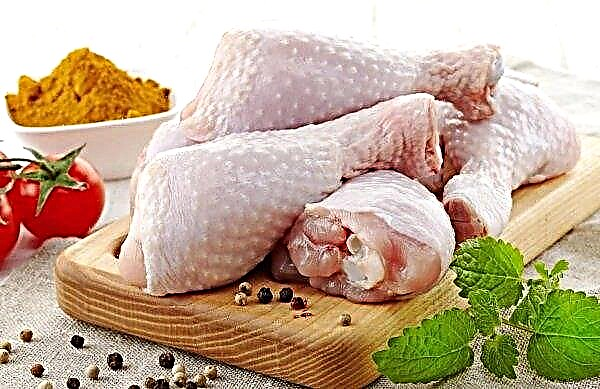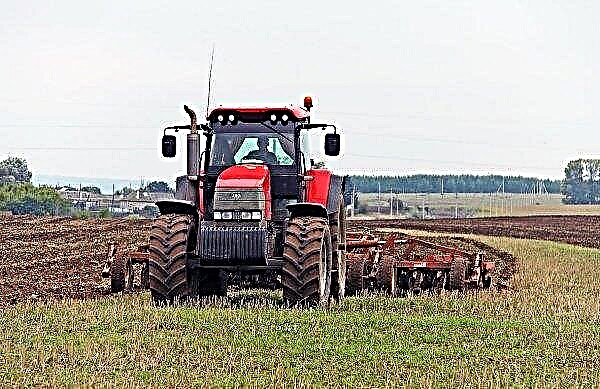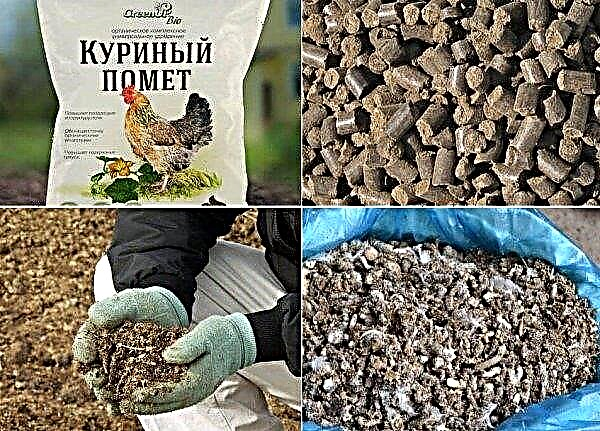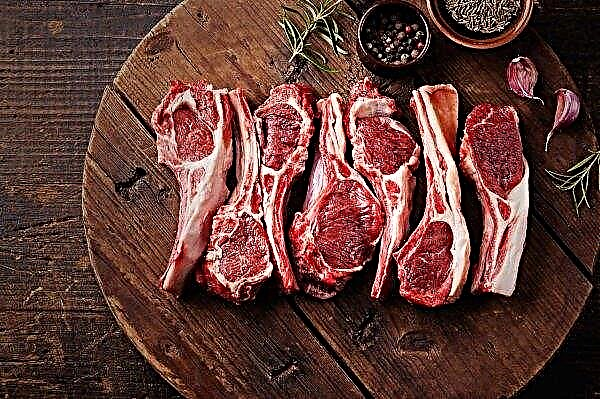Chicken egg production is one of the main indicators of its productivity, therefore it is very important for any farmer to keep it at the maximum level. Failures in this field can be caused by several reasons. About why chickens rush worse than planned, how you can influence the situation, and when you just need to wait a bit - we will tell in this review.
Age for egg production and productivity
The first thing a beginner farmer needs to know is that the laying capacity of chickens primarily depends on their breed, and more precisely, on the direction of use. According to this criterion, chickens are divided into three main categories:
According to this criterion, chickens are divided into three main categories:
- Eggthat are bred primarily for eggs.
- Meatgrown for meat.
- Meat and egghaving universal purpose.
Important! Egg breeds of chickens are always smaller and more active, meat breeds are heavy and phlegmatic, meat-and-egg species represent the “golden mean” between the two first species.
Egg Breeds
The main thing that is required from chickens in this direction is to carry as many eggs as possible. Egg breeds include those that demonstrate the following indicators:
Egg breeds include those that demonstrate the following indicators:
- puberty (age when the first clutch appears): 17-19 weeks (approximately 4.5 months);
- average annual number of eggs: 160-300 pieces;
- egg mass: in young women 45–55 g, in adulthood - 55–65 g;
- average period of use of layers: up to one and a half years in industrial production and up to two years in private households.
Meat and egg breeds
This variety of chickens is distinguished by the following average rates of egg productivity:
- first masonry age: 22-24 weeks (after five months);
- average annual number of eggs: 170-180 pieces;
- egg mass: 56-58 g;
- hen use period: up to four years.
Important! Chickens of all directions show the highest egg production towards reaching one year of age. Then it begins to decline gradually, losing about fifteen percent each year.
Meat breeds
Heavy chicken meat breeds are less productive, showing on average such results:
- onset of egg production: after 26-28 weeks (six and a half - seven months);
- average annual number of eggs: 110-130 pieces;
- average egg mass: 58-60 g (in young hens, eggs are usually smaller, but by the age of eight months their sizes are compared with the "production" of eggs in the egg direction, and after a few months they become even larger);
- hen use period: up to a year, then there is a slaughter for meat.
The indicated parameters are very averaged and may vary depending on the particular breed. So, for example, a plymouthrock - an American meat-bearing bird - with good content, can carry up to 200 eggs a year, that is, in terms of egg production, it is ahead of not only its "meat" relatives, but even most meat and egg breeds. Chickens of the Plymutrok breed. Here, the Campinian chickens bred in Belgium are considered to be egg chickens, but their annual rate is only 135-145 eggs of modest size (55-60 g).
Chickens of the Plymutrok breed. Here, the Campinian chickens bred in Belgium are considered to be egg chickens, but their annual rate is only 135-145 eggs of modest size (55-60 g).
Important! For maximum egg productivity by the time of the first laying, the chicken should gain at least three quarters of its laid weight. Too early onset of egg production is one of the main causes of small eggs produced by laying hens.
Why chickens do not rush: reasons and solutions
The reasons why chickens abruptly stop laying eggs or are laying poorly can be different, but, as a rule, the situation can be corrected.
Improper feeding
Egg laying of chickens depends on several factors, however, the main mode of feeding is. In this case, the cause of a decrease in productivity may be:
- underfeeding;
- overfeeding;
- unbalanced nutrition;
- violation of the regime (frequency of feedings and the duration of breaks between them).
 Therefore, the first thing to do, having noticed a decrease in the number of eggs in the clutch, is to establish the proper nutrition of the bird.
Therefore, the first thing to do, having noticed a decrease in the number of eggs in the clutch, is to establish the proper nutrition of the bird.The hens ’diet must include:
| Type of feed | Percentage in diet | Amount of calculation per head in grams |
| Wheat grain | 50 | 65 |
| Oats | 15 | 20 |
| Barley | 25 | 40 |
| Rye (millet) | 5 | 35 |
| Corn | 5 | 35 |
| Legumes | 3 | 12 |
| Cake or meal | 2,5 | 8 |
| Meat-bone or fish meal | 7 | 10 |
| Salt | 0,3 | 0,4 |
| Seashells, fine gravel, chalk | 3,5 | 5 |
Important! Quality feed contains all the vitamins necessary for a bird.
Among the most important vitamins for increasing egg production are:
- vitamin A (if it is not enough in the diet, the eggs become smaller, and the yolk becomes pale);
- vitamin D (he participates in calcium-phosphorus metabolism, so the first sign of his absence is a thinned shell, in critical cases of vitamin D deficiency, chickens lay eggs without shells);
- vitamin e (primarily affects the fertility of eggs, although their number also depends on tocopherol);
- B vitamins - thiamine, riboflavin, pyridoxine, cobalamin (without this group of substances, chickens are poor, among the symptoms of a deficiency of group B vitamins are plumage problems and softening of the claws).
Find out more

In winter, chickens need to be fed more often and more, enriching their diet with such additives as:
- fish fat;
- coniferous flour;
- baker's yeast;
- bran;
- waste from the human table;
- potatoes;
- milk products;
- various mixers.
Important! It is better to give wet food to the bird during the day, and dry - in the morning and evening.
You need to feed the chickens at the same time, this accustoms them to the regime and increases the egg production. Do not include in the diet of birds:
Do not include in the diet of birds:
- potato peel;
- white bread, especially fresh;
- raw fish;
- beets;
- all types of citrus;
- some herbs, such as celandine or ragweed;
- sweet and salty foods.
Molting
In a healthy bird, molting lasts from one and a half to two months. If this process in a bird lasts longer and starts earlier, high egg production rates should not be expected from it. In order to help the bird during molting, you should:
In order to help the bird during molting, you should:
- increase the protein content in the diet of laying hens and increase its caloric content (it is recommended to replace mixed feed for this time with more nutritious mixtures for broilers);
- focus on feed containing sulfur (cabbage, peas, dairy products);
- give birds the opportunity to stay longer in the fresh air;
- avoid physical contact with the bird, so as not to accidentally injure the skin in the place of the growing feathers;
- carefully monitor that the chickens have access to fresh and clean water;
- provide optimal temperature, humidity and ventilation in the house;
- Protect layers from any emotional upheaval.
Did you know? The first eggs laid by a chicken after a seasonal break are considered the most beneficial for health. They are smaller than is typical for the breed, but they contain the maximum amount of nutrients and vitamins.
Crowding
To maintain the stated egg production indicators, no more than five layers should be located on one square meter of area. A smaller amount of free space adversely affects the emotional and physical state of the bird, which immediately affects the number of eggs laid by it.
In addition, a sufficient number of nests should be provided in the house, otherwise the chickens will feel the same crowding and crowding. There is no need to equip a personal nest for each bird, but the proportion of six layers per nest must be respected. In addition, the nests should be located at such a distance from each other that the hatching bird could not reach the neighboring masonry. Feeling hungry, the hen may well begin to peck eggs from the nest nearest to it and, accordingly, reduce their number.
In addition, the nests should be located at such a distance from each other that the hatching bird could not reach the neighboring masonry. Feeling hungry, the hen may well begin to peck eggs from the nest nearest to it and, accordingly, reduce their number.
According to generally accepted standards, per 1 sq. Km. m area should be located no more than five layers.
Diseases
Productivity problems can be caused by infections that are dangerous to the whole herd, as well as general diseases that affect a specific individual.
The first category should include diseases:
| Name of infection | Main symptoms | Treatment |
| Salmonellosis (paratyphoid) | Foamy diarrhea, shortness of breath | Furazolidone |
| Plague | Characteristically lowered head, general weakness | The viral nature of the disease precludes effective treatment. The bird is slaughtered |
| Colibacillosis | Thirst, wheezing, diarrhea | Antibiotics (biomycin, terramycin, sulfadimezin) |
| Prostogonymosis | Feather loss (starting from the abdomen), shaky gait, abdominal tenderness | Carbon tetrachloride |
| Pseudo-purse (Newcastle disease) | Heat, mucus in the mouth, fetid discharge from the beak | The disease is not treated, the bird is slaughtered, the carcass is destroyed |
| Tuberculosis | Shortness of breath, leg paralysis | The treatment is very expensive, so the bird is usually slaughtered |
| Aspergillosis | Labored breathing, lethargy | Potassium iodide, copper sulfate |
| Pasteurellosis | Yellow-green diarrhea, sometimes with blood, fever, shortness of breath | Sulfamides |
| Coccidiosis | Diarrhea green with bloody spots | Coccidiostatics (zoalen, amprolium) |
| Ornithosis | Hoarseness, diarrhea, lethargy | Antibiotics (tetracycline) |
| Pullorosis | Diarrhea of white color, redness and mucus filling of the oral and nasal cavities | Antibiotics (tetracycline) |
A special problem that can dramatically reduce the egg production of a feathered herd and spread to all individuals is helminths.
It will be useful for you to find out

The main parasites dangerous to poultry include:
- nematodes;
- roundworms;
- amidostomy;
- histomonads;
- tapeworms;
- filamentous worms;
- flat fluke (causes the aforementioned prostogonimosis).
Anthelmintic drugs can cope with the pathogen, however, the egg production in the bird is not restored immediately. Therefore, it is better not to allow infection, observing the sanitary and hygienic standards for keeping birds.
Did you know? The Leghorn is rightfully considered the record holder for egg productivity. This breed holds two consecutive world records for the number of eggs laid per year: in 1930, an indicator of 361 eggs was recorded, and in 1979 - 371.
Non-infectious diseases of laying layers can also reduce masonry productivity. Among them, we can name a few of the most frequent:
| Name of the disease | Main symptoms | Treatment |
| Salpingitis (inflammation of the oviduct) | Abdominal enlargement, mucous discharge, ovarian prolapse | Sinestrol, pituitrin |
| Cloacite (inflammation of the cloaca) | Feather loss under the tail, weight loss | Washing cesspools, disinfecting ointments |
| Salpingoperitonitis (vitelline peritonitis) | Gray-green diarrhea, discharge from the cloaca, an increase in the size of the abdomen | Sulfazole and antibiotics |
| Gastroenteritis | Diarrhea, lethargy, weight loss | Normalization of conditions of detention, balanced nutrition, disinfection |
| Atonia goiter | Goiter becomes hard and sag down | Mechanical method: vegetable oil is introduced into the goiter through a probe, after which neck massage is performed |
Stressful situations
Beginner farmers often encounter this problem: they bought laying hens, but they do not rush. But time passes, and the situation improves by itself. It turns out that the cause of this phenomenon may be ... the stress that a bird experiences when it gets to a new place.
Did you know? European, American and Australian scientists who have studied the intelligence of chickens for many decades, including through experimentation, have come to surprising conclusions. It turns out that these birds are far from being as stupid as people think. Chickens are able to count, memorize and choose the most suitable option for themselves behavior.
Usually, the adaptation period for a laying hen lasts from five to seven days, so one week after the purchase it is already possible to judge the rates of egg production.
This period can be shortened by adding an increased dose of vitamins to the diet of birds, as well as special medicines, the so-called adaptogens or stress protectors:
- "Methyluracil";
- Dibazole
- "Triftazine";
- "Phenazepam";
- "Reserpine";
- Amizil.
 In addition to changing the environment and the “team”, other factors cause stress in birds, for example:
In addition to changing the environment and the “team”, other factors cause stress in birds, for example:- uncomfortable temperature in the chicken coop (both cold and heat);
- noise (loud talk, thunderstorm, strong wind or rain);
- a sharp change in lighting (in natural conditions, day and night do not replace each other instantly, so the backlight mode in the house should be set with the possibility of gradual on and off);
- the presence of rodents in the house;
- predator attack;
- hunger or overeating;
- thirst;
- tightness (especially with cellular content);
- injuries received;
- medical procedures (say vaccination);
- conflicts in the herd.
Did you know? Contrary to popular belief, chickens can physiologically sweep even at low temperatures, while being in unheated cells on the street. Cold air is less dangerous for birds than humidity and drafts.
Seasonality
The maximum rates of egg laying in chickens are always manifested in the summer. In September, when nights get longer, the productivity of laying hens gradually decreases, by mid-autumn, due to seasonal molting, it practically stops, so that it resumes in the spring with a new force. But this does not mean that in winter chickens do not rush.
If optimal conditions are created for the bird, it is healthy, eats well and does not experience stress: the egg production time is maintained, although its performance is low.
There are many secrets that allow you to increase the egg production of chickens in the winter, but they are all universal, “off-season” in nature, therefore, about this separately.
How to increase egg laying in chickens?
In order for the egg production of chickens to always be high and minimally dependent on the changing season, the following rules should be followed:
- equip the correct lighting in the chicken coop: daylight hours should last at least 14 hours, and some farmers provide such a regime exclusively by artificial lighting (windows in the house do not provide) so that the bird does not feel the natural fluctuations in daylight hours. It is interesting that only due to competent re-illumination the egg “yield” can be increased by 20%;
- adhere to the recommended diet (with vitamins, mineral supplements and enhanced feeding in the cold season);
- protect chickens from stressful situations;
- observe cleanliness and dryness in the chicken coop, carry out the prevention of infectious diseases;
- timely carry out the planned replacement of the herd (a full shift should take place every 2-3 years, while out of every 10 chickens 6 should be no older than a year);
- choose breeds with obviously high egg production.
Some farmers have resorted to extreme ways to increase the productivity of laying hens, such as artificial molting. Chickens are deliberately introduced into a state of stress (for example, by short starvation), and then, when the birds "start to nerve" the feathers drop, they again return them to a full diet. After such a shake, egg production, indeed, increases, but the chicken at the same time lives at the limit of its capabilities. The owners, who care about the health of their livestock and seek to use it for a long time and productively, do not practice such cruel experiments.
The owners, who care about the health of their livestock and seek to use it for a long time and productively, do not practice such cruel experiments.
The right breed choice, good care, concern for the health of the feathered herd and timely response to factors that reduce egg productivity will help to achieve consistently high rates of egg production in both summer and winter.


